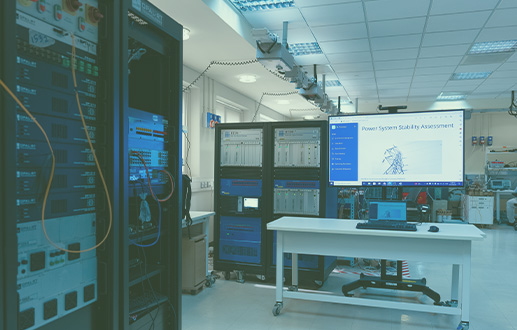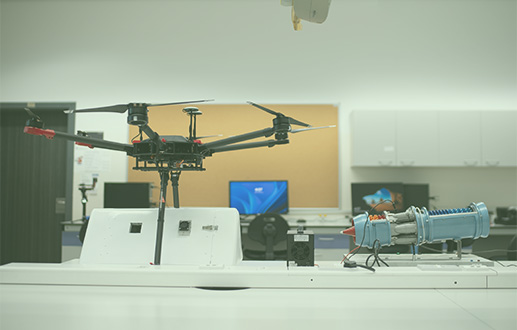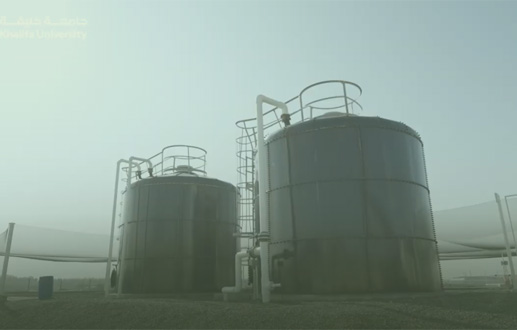Symposium

Session 1
Symposium - Innovations in Renewable Power Generation, Storage, and Utilization
Time
Dec. 4, 3:30 pm - 4:30 pm
Location
Ministry of Education/Green Education Hub
Speakers
Tiejun Zhang,
Khalifa University, "Sustainable Power Generation"
Daniel Choi,
Khalifa University, "Grid-Scale Energy Storage"
Mohamed El Moursi,
Khalifa University, "Renewable Energy Integration"
Ehab El-Saadany,
Khalifa University, "Smart Transmission and Distribution"
Vinod Khadkikar,
Khalifa University, "Demand Side Energy Efficiency"
Session 2
Workshop - Unleashing the Power of Innovation in Clean Energy Transition
Time
Dec. 5, 10:30 am - 11:30 am
Location
Mubadala Pavilion
Moderator
Olivia O'Hennigar,
Mubadala
Workshop Panels
Rodrigo Martins,
President of European Academy of Sciences
Neil Wilmshurst,
Senior Vice President of Electric Power Research Institute
Mark Levine,
Leading author of the UN Climate Change report that was awarded 2007 Nobel Peace Prize.
Roland Roesch,
Director of Innovation and Technology Center, International Renewable Energy Agency
Session 3
Workshop - Climate Research and Innovations in UAE's Universities
Time
Dec. 5, 2:00 pm- 3:00 pm
Location
Ministry of Education/Green Education Hub
Moderator
Samuel Mao,
Khalifa University, and Executive Director, UCN Research & Innovation Workgroup
Workshop Panels
Heather Armour,
COP28 Senior Advisor for Education, and Coordinator of University Climate Network (UCN)
Mohamed El Moursi,
Khalifa University, and Director of Research and Innovation Resources, UCN Research & Innovation Workgroup
Rasha Bayoumi,
University of Birmingham Dubai, and Director of Institutional Research Collaborations, UCN Research & Innovation Workgroup
Ghanim Kashwani,
High Colleges of Technology, Director of Industry Partnership, UCN Research & Innovation Workgroup
Research Projects Showcase

Booth Number
8G
Location
Technology and Innovation Hub2

Beam-down solar concentrator
The Beam-Down Solar Concentrator constitutes an alternative to the central receiver design of concentrated solar towers, typically operating with two tanks of nitrate molten salts as their energy storage system. The design redirects rays with secondary reflectors near ground level. This is a potential design for commercial development of concentrated solar power plants, which contributes to clean energy and sustainability goals. These rare systems are distinct from existing solutions and provide specific unique uses and advantages over a central receiver design.

Climate Change Impacts in the Middle East and North Africa (MENA) region
In the Middle East and North Africa (MENA) region, climate change has impacts on rising sea levels, extreme weather, heat, flooding, dust storms, and heavy rains. The available climate data often lacks specificity for regional accuracy, and linking climate change to short-term extreme weather events is important. This project aims to simplify climate change concepts and offer updated science-based information. High-resolution climate modeling, satellite observations reveal climate change impacts, which enhances strategy design for sustainable energy transition across sectors.

SAVE Software: Stability Assessment, Visualization and Enhancement (SAVE) software for Power Grid with Renewable Energy Integration
The Stability Assessment, Visualization and Enhancement (SAVE) software predicts the stability of power grids and tackles hurdles to renewable energy integration that involve rising solar PV power penetration, as well as nuclear power integration, low inertia, and stability profile change. The software uses AI and innovative methods to match renewable electricity with varying consumption levels.

Campus Sustainable Water Source: Water Production from Air Powered by Solar Energy
As a key component of KU’s campus sustainability initiative, the KU research team developed and commissioned an entirely sustainable freshwater source based on water production from air, powered by solar energy. This campus sustainable water from air project supports the global water security roadmap and tackles the pressing challenges faced by the UAE in terms of ensuring abundant and clean water resources, while also emphasizing the importance of sustainable water management practices.

Design, Integration and Testing of Hybrid Electric Propulsion System for Advanced Air Mobility Vehicles
Several ongoing research and development efforts in Urban Air Mobility (UAM) both nationally and internationally are looking into the distinct opportunities that Unmanned Aircraft Systems (UAS) have to offer towards enhancing the efficiency and environmental sustainability Point-to-Point (P2P) transportation of goods and passengers in Urban and Regional Air Mobility (UAM and RAM). One of the applications that would benefit the most from a fast and capillary P2P UAS service is the carriage of human organs, medical and other goods of biological nature (e.g., blood packs) to minimize the risks that road traffic and roadblocks cause on the timely delivery of these important items.

Development of a Novel CubeSat for Climate Change Impact Assessment
This project aims to design, integrate and test (at sensor, sub-system and system level) a 3U CubeSat capable of assessing the impacts of human-induced climate change on “green” areas, with a primary focus on the UAE and Gulf region. The design activities will be based on a combination of innovative electro-optical sensors (using active and passive techniques) and low-cost commercial-off-the-shelf (COTS) hardware components for the spacecraft Attitude Determination and Control Systems (ADCS), which will be properly integrated on the 3U CubeSat. Additionally, appropriate software tools will be developed for real-time processing and filtering of both ADCS and remote sensing data.

2D materials based membranes for water treatment
This project is a specific work package from the RIC2D project titled ‘3D-Printed Graphene Membranes for Advanced Water Filtration’. This project aims to develop innovative water filtration solutions using graphene-based membranes manufactured through 3D printing technology. Graphene, a single layer of carbon atoms arranged in a hexagonal lattice, possesses remarkable electro-chemical properties supporting the development of stimuli responsive separation materials. By leveraging these properties, the project seeks to address challenges in water purification and contribute to sustainable water management by developing conductive membranes and gate-responsive membranes to support greater performance and speciation.

Sustainable Bioenergy Research Consortium
The SBRC’s Seawater Energy and Agriculture System (SEAS) project uses marginal resources to create an industrial ecology network, combining integrated aquaculture, halo-agriculture of Salicornia fields cultivation and halo-agroforestry to generate sustainable biofuels for aviation. The project aligns with the UN Sustainable Development Goals by producing biomaterials and bioenergy. The SEAS platform is the world’s first research facility to minimize waste, and grow both food and fuel using desert land irrigated by seawater, and produce sustainable biofuels for aviation.


